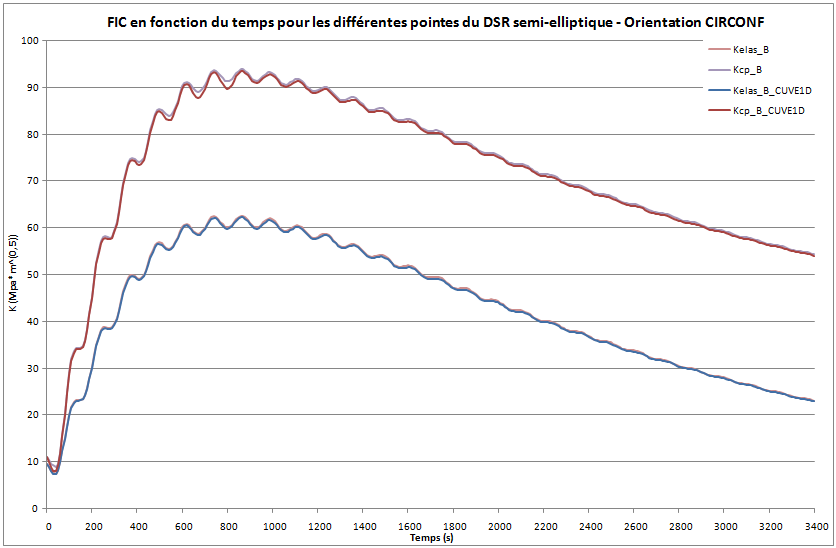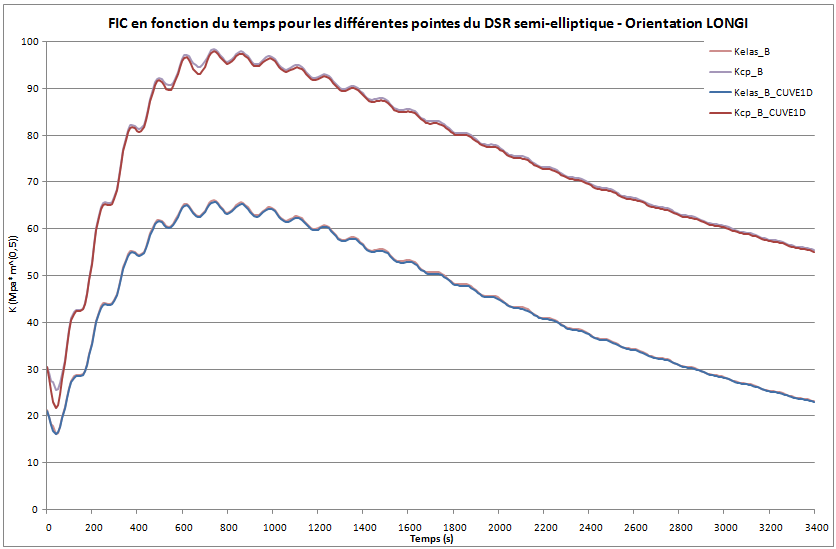3. Modeling A#
3.1. Characteristics of modeling#
Modeling \(\mathrm{2D}\), axisymmetric (SEG3, QUAD8)
3.2. Characteristics of the mesh#
Number of knots: 1443
Count of elements: 578 SEG3, 288 QUAD8.
3.3. Tested sizes and results#
Below is the comparison of Aster results to the reference results.
3.3.1. Semi-elliptical defect in longitudinal orientation#
Value Type |
Instant |
Reference Type |
Reference Value (Mpa) |
Tolerance % |
|
K1_ MDB |
0.0 |
“AUTRE_ASTER” |
21.12 |
0.75 |
|
KCP_MDB |
0.0 |
“AUTRE_ASTER” |
“” |
30.44 |
0.5 |
K1_ MDB |
“AUTRE_ASTER” |
63.96 |
0.75 |
||
KCP_MDB |
“AUTRE_ASTER” |
95.19 |
1.5 |
||
K1_ MDB |
“AUTRE_ASTER” |
23.01 |
0.75 |
||
KCP_MDB |
“AUTRE_ASTER” |
55.12 |
0.75 |
3.3.2. Semi-elliptical circumferential orientation defect#
Value Type |
Instant |
Reference Type |
Reference Value (Mpa) |
Tolerance % |
|
K1_ MDB |
0.0 |
“AUTRE_ASTER” |
“” |
9.57 |
0.75 |
KCP_MDB |
0.0 |
“AUTRE_ASTER” |
“” |
11.00 |
0.5 |
K1_ MDB |
“AUTRE_ASTER” |
59.74 |
0.75 |
||
KCP_MDB |
“AUTRE_ASTER” |
89.61 |
1.2 |
||
K1_ MDB |
“AUTRE_ASTER” |
22.91 |
0.75 |
||
KCP_MDB |
“AUTRE_ASTER” |
54.05 |
0.75 |
3.4. notes#
The following figures represent the temporal evolution of the elastic stress intensity factor as well as the temporal evolution of the elasto-plastic stress intensity factor (called « plastically corrected ») at the level of the point B of the defect as obtained with Code_Aster. These changes are also compared with their equivalents provided in the reference solution; the results obtained are very satisfactory.

